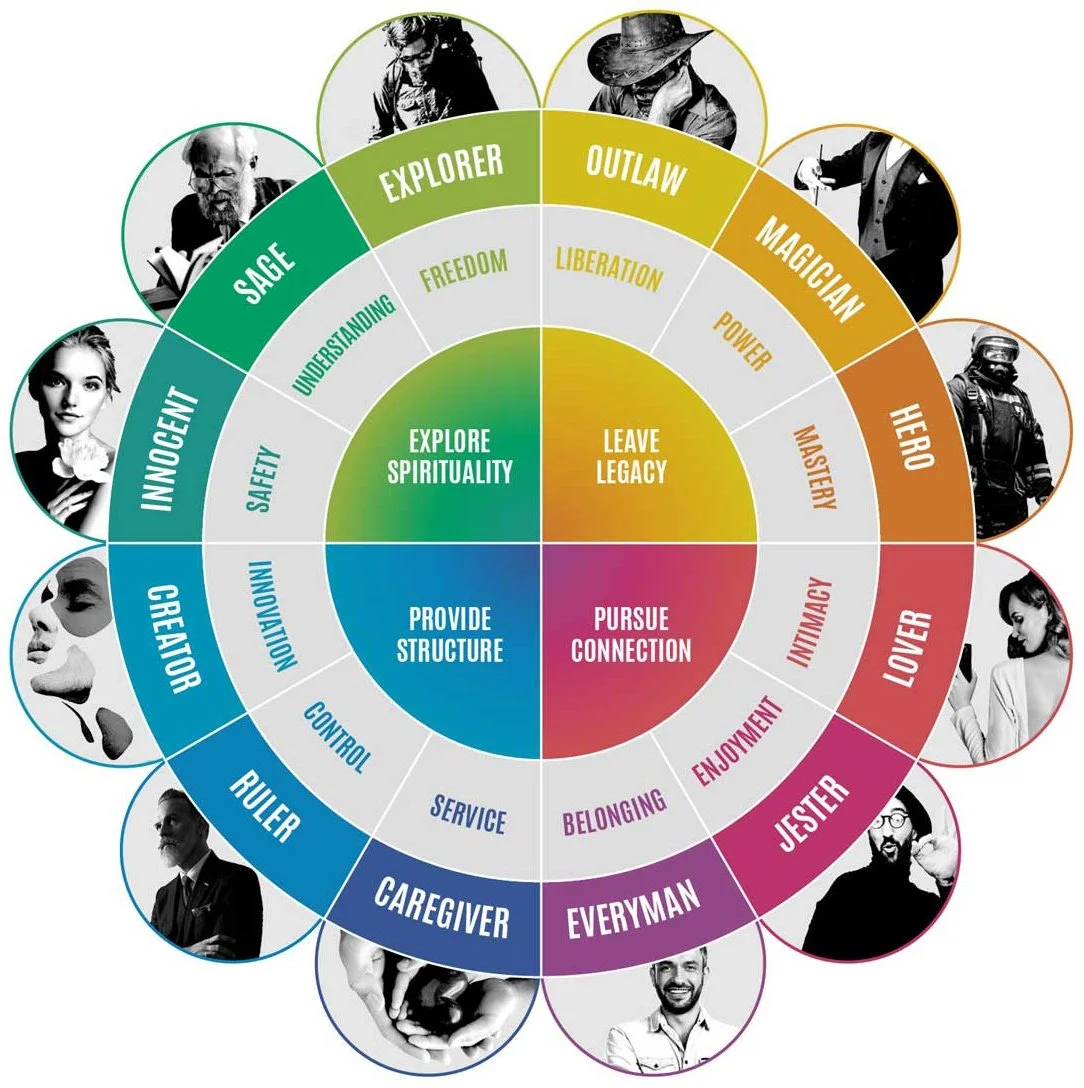Brand Archetypes: a good way to define brand personality?
If you follow me on Instagram, you'll probably have seen this post on brand archetypes and why I'm not a huge fan of this framework.
But I wanted to dive a little deeper into why I don't think brand archetypes are particularly useful, and some better ways of building a brand identity.
And if you’ve never seen this framework before, it originated with Carl Jung’s four main human archetypes, which marketers expanded into the 12 you can see below:
Carl Jung’s brand archetypes
So let’s dive in.
Why do brand archetypes fall short?
So firstly, my issue with brand archetypes is that the whole point of a brand is that it’s supposed to be the opposite of a generic.
Brand archetypes are a fairly one-dimensional approach to defining a brand personality. You look at a list of attributes and values (e.g. belonging or control), match your brand up with a couple of archetypes that meet the mark, and voilá.
Secondly, when I've tried to use brand archetypes in a brand identity project in the past, I've been met with blank faces and unconvinced nods. And let me just point out here that this will definitely depend on the type of client you're working with.
In my case, working with startups in the tech sector, the brand archetype process didn't connect with the founders, product owners, or CEO and I was forced to tweak my approach.
I can imagine though, if you're working with smaller brands or one-man-band founders in different industries, they might enjoy the brand archetypes approach: it's lighthearted, there are plenty of examples if you're stuck, and it's fairly simple to follow. What's not to love?
My issue is that brand archetypes often force you into a one-dimensional place, the opposite marker of a strong brand. And when you actually try and put it into practice, it often falls flat.
Imagine this scenario – you are in conversation with a client:
“Well, you're really down to earth, so you're partly the Everyman, but you also offer a sense of safety, so that makes you a touch of the Innocent too. But then, you've always been known for your humour – so you're a bit of the Jester."
What this should tell you, is that the brand is incredibly nuanced – it doesn't really fit squarely into any of the archetypes.
What if you were to forget the brand archetype wheel and just focus on the real, human elements of the brand: the people that make up the company, their beliefs, the values inherent to the product and company, the “Why” story…You'd likely end up with a unique set of attributes that are far more nuanced than you expected.
Nuanced is where you want to get to, my friends.
Another example:
Apple is often called The Creator. Until someone else suggests it’s actually The Outlaw. But isn’t Apple’s personality as much about belonging? Or simplicity? Does the latter not make Apple The Innocent?
📌 POV: A better solution is to ditch the generic approach and tackle brand identity from a human perspective.
Talk to the team
Try personifying the brand - imagine they’re at a party: who are they with, how do they behave, where will you find them 99% of the night, what are they talking about, what do they order at the bar, are they enjoying themselves or would they prefer to be somewhere else? You can get really creative here.
Interview the founders
Do your positioning work well
Identify the values inherent to the company
Look at the product or service – what are the unique attributes that make it different?
Ask your client team to bring in examples of how they want to look, feel, and sound and to benchmark against existing brands they resonate with.
In short, brand identity is all about connection, nuance, and depth. I've seen a few people say that brand archetypes do provide a lot of depth, but I guarantee that a more tailored approach will provide way more depth than you realise.
Yes, it’s harder and not as much fun as the archetypal wheel, but it will get you to a better outcome: a more differentiated, real, nuanced brand.
So use brand archetypes to kickstart your process if you need to, I'm definitely not saying to bin it if it works for you, but please don't just stop there.
© 2024 LTD. Crafted with ♥ in London
Resources
Follow Sarah
